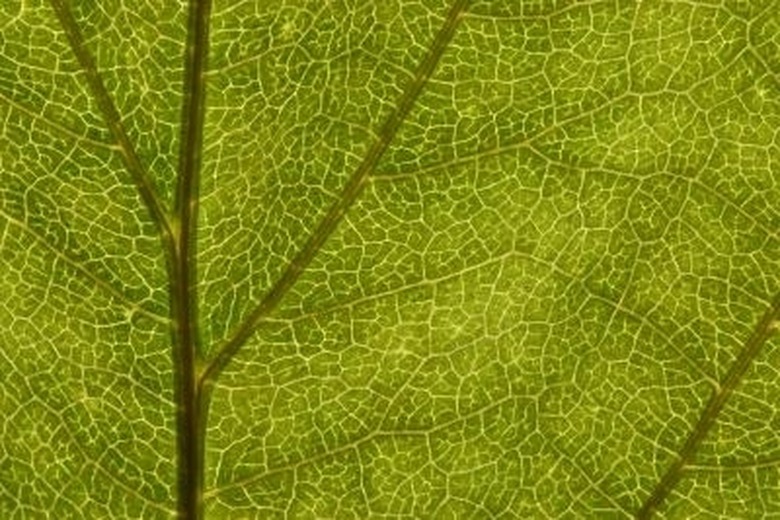What Is A Carbohydrate Found In A Cell Wall Of Plant Cells?
Carbohydrates are organic or carbon-containing compounds with the empirical formula CH2O, meaning that the molecular formula of a carbohydrate is a multiple of this simple formula. Cellulose is a carbohydrate and a key component of plant cell walls.
Features
Features
Cellulose is a polysaccharide, meaning that it's a polymer made up of sugar subunits. Cellulose fibers are formed from chains of glucose molecules that can be hundreds or even thousands of units long. These chains or fibers compose the tough matrix that provides strength and structural reinforcement for the plant cell wall.
Structure
Structure
Like cellulose, starch is also a polymer of glucose molecules. The differences between the two, however, serve to explain why cellulose is much stronger — and hence a better component for cell walls. In starch, all glucose molecules have the same orientation, while in cellulose each glucose subunit is "flipped" with respect to its neighbors. Consequently, the structure of cellulose — unlike that of starch — creates opportunities for adjacent chains to form hydrogen bonds with each other. These hydrogen bonds hold chains together like the strands of a nylon rope, making for a tough resilient fiber.
Fun Fact
Fun Fact
Cotton and paper are made of cellulose, and wood is composed largely (though not entirely) of cellulose. According to Kimball's Biology Pages, cellulose is probably the most abundant macromolecule made by living organisms.
References
- "Biology"; Neil A.Campbell, Jane B. Reece, Lisa A. Urry, Michael L. Cain, Peter V. Minorsky, Steven A. Wasserman, Robert B. Jackson; 2008
Cite This Article
MLA
Brennan, John. "What Is A Carbohydrate Found In A Cell Wall Of Plant Cells?" sciencing.com, https://www.sciencing.com/what-is-a-carbohydrate-found-in-a-cell-wall-of-plant-cells-12000355/. 21 July 2017.
APA
Brennan, John. (2017, July 21). What Is A Carbohydrate Found In A Cell Wall Of Plant Cells?. sciencing.com. Retrieved from https://www.sciencing.com/what-is-a-carbohydrate-found-in-a-cell-wall-of-plant-cells-12000355/
Chicago
Brennan, John. What Is A Carbohydrate Found In A Cell Wall Of Plant Cells? last modified March 24, 2022. https://www.sciencing.com/what-is-a-carbohydrate-found-in-a-cell-wall-of-plant-cells-12000355/
